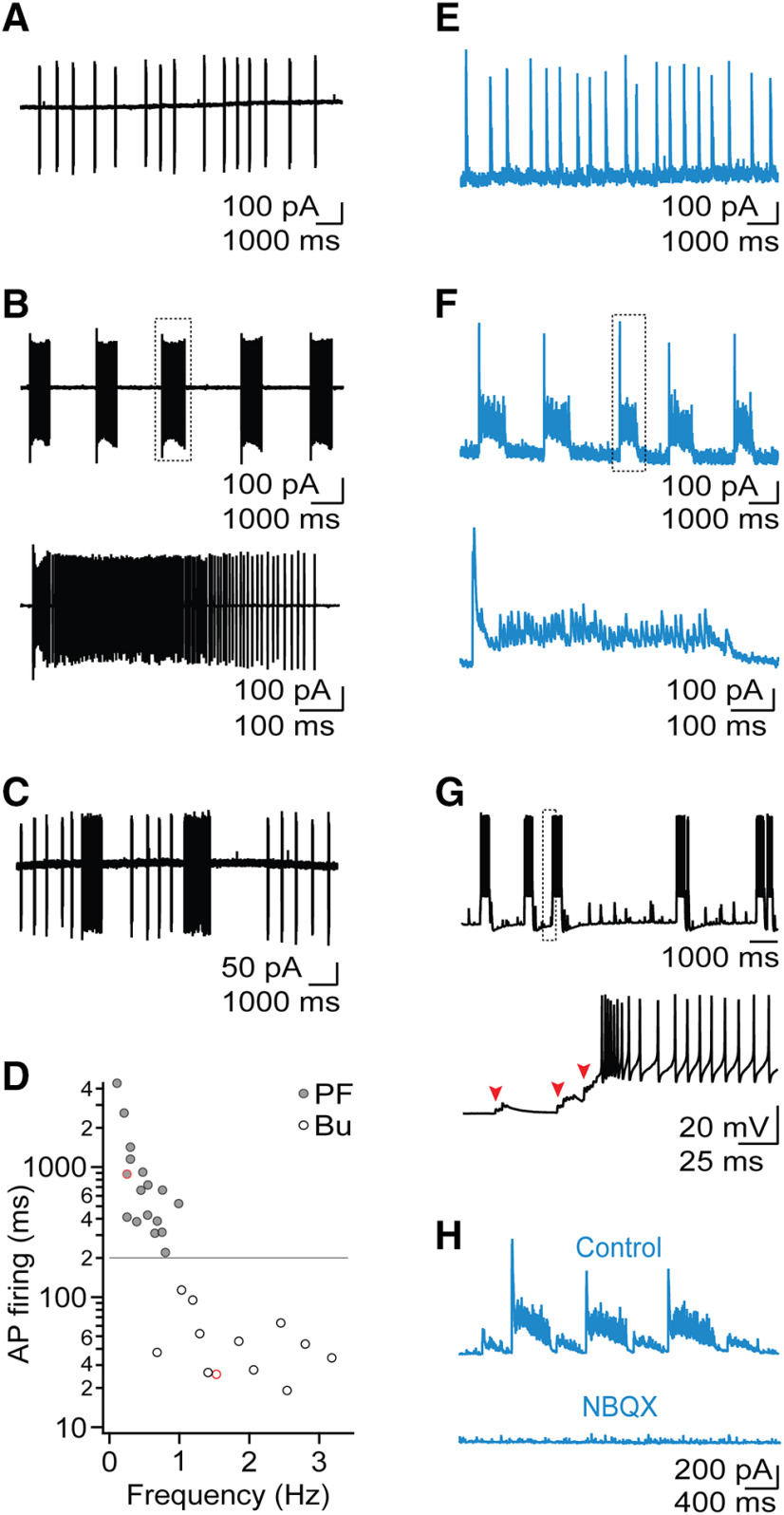Figure 1.
Rhythmic activity in thalamic networks. A, Loose-patch recording from TRN neuron showing rhythmic burst firing. B, Top, TRN neuron showing rhythmic PF. Bottom, Closeup highlighting an individual barrage of PF. C, TRN neuron showing rhythmic activity consisting of both burst firing and PF. D, Summary data (n = 29) plotting the average duration of TRN firing as a function of oscillation frequency, for neurons with either burst firing or PF. Red data points represent cells shown in A and B. Dashed line indicates criterion separating between rhythmic bursting and PF. E, Voltage-clamp recording from VB neuron held at 0 mV displaying rhythmic bursts of IPSCs. F, Top, Recording from VB neuron displaying rhythmic barrages of IPSCs. Bottom, Closeup shows an individual barrage of IPSCs. G, Top, Current-clamp recording from TRN neuron, showing PF during network activity. Bottom, Closeup shows that bursts of EPSPs (marked by red arrows) trigger PF. H, Representative recording of rhythmic barrages of IPSCs in VB neuron, under control conditions and following bath application of NBQX (10 μm). Similar data were obtained from four other VB neurons.

